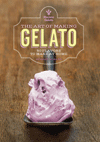Consider ice cream mix processing advances
Novel approaches offer the potential to improve ice cream mix processing, but processors will want to keep a close eye on sensory appeal in the evaluation process

Each innovative modification of ice cream mix processing must consider what is to be modified and the influence (+/-) on multiple-unit operations (i.e., assembly of amount/type of ingredients, creation of a uniform mix, pasteurization, homogenization, mix aging). Each operation has its own set of influences (+/-) on the chemistry and physics of any given mix going forward into other downstream processes.
A variety of advances in mix processing have been proposed. In some cases, effects on structure and sensory appeal have not been completely evaluated, which makes their use in classical mix processing more challenging.
Ingredient assembly
Inline vacuum mixing is a process in which liquid and dry mix ingredients are blended under a vacuum. The vacuum eliminates dusting and incomplete incorporation of dry ingredients. The absence of entrapped air in the mix has the effect of reducing burn-on in the pasteurizer. Also avoided is any negative influence of tiny air bubbles on homogenization efficiencies. In addition, entrained air homogenization can cause problems in achieving a consistent overrun during freezing.
Various types of inline high-shear mixers have been proposed and show promise. Each involves exposure to the continuous application of high levels of shear. High shear achieves uniform dispersion of ingredients and, sometimes, the activation of functional properties, either of a single component(s) per se or through facilitating interaction between two or more components of the mix.
Shear also can yield smaller fat droplet sizes that supplement homogenization. However, adding shear is quite qualitative and can become additive with other sources of shear, creating negative influences (e.g., over-agglomeration of fat and excessive protein destabilization) on the properties of finished ice cream.
Homogenization
There are a couple of alternatives to achieving homogenization effects that could be usefully applied to ice cream mix.
Ultra-high-pressure homogenization refers to the application of valve homogenizers designed to achieve very high pressures, generally 5,000 to 12,000 psi. Achievable are fat globule diameters as low as 0.3 microns, which are substantially smaller than those produced by traditional homogenization (~1 micron).
Microfluidization involves high-velocity collision of two streams of mix in which shear, turbulence and cavitation at the point of collision produce fat globules 25% to 50% smaller (with a narrower particle size distribution range) than globules produced by traditional valve homogenization. The process has been successfully applied in cream liqueurs to produce emulsion stability required for long-term room temperature storage.
It has been reported that each of these processes can improve the richness/creaminess and extend the textural shelf life of ice cream. The mechanisms for that improvement include the fat-sparing effects of decreased size and increased number of fat globules. The greater surface area created increases involvement in secondary effects of fat agglomeration during whipping/freezing.
High shear as applied can also cause mild protein denaturation that may have positive effects. Effects are most dramatic at fat levels below those of full-fat products, making these effects particularly relevant to reduced-fat, low-fat and no-fat ice creams.
Caution is appropriate. Compared to conventionally homogenized products, the increased fat surface area creates the need for greater emulsification capacity in the mix. Thus, it may be desirable to add more emulsifier (e.g., mono- and diglycerides) to achieve a stable emulsion and support the contribution of fat’s positive influence on final ice cream structure, shelf life and eating quality.
Pasteurization
Ignoring, for now, regulatory considerations, there are a number of proposed approaches (with or without thermal processing) to pasteurization. Of course, rendering mix pathogen-free is the critical factor.
High hydrostatic pressure (HHP) applied at upwards of 50,000 psi has been found to inactivate microorganisms and could be considered as an alternative to pasteurization. Beyond pasteurization effects, exposure to HHP has been found to change the functionality of select dairy components. For example, increased viscosity and improvements in overrun retention and foam stability have been observed in the use of HHP-treated whey protein concentrate.
Other studies have shown significant effects to be associated with the disruption of casein micelles to form a network of micellular “fragments.” Again, care is necessary when considering potentially desirable chemical and physical influences on textural shelf life and flavor delivery.
HHP is costly and logistically unsuitable for the processing of ice cream mix per se. However, it may be useful in achieving desirable functional modifications of ingredients that could be beneficially applied to ice cream.
Ultrasonication uses sound waves greater than 18 kilohertz to reduce the level of viable microorganisms (including pathogens). Its application has also been found to have positive effects on mix rheology and foaming properties.
Reports indicate that exposure of ice cream per se to ultrasonication during whipping/freezing produces smaller ice crystals that add to creaminess, richness and freeze/thaw stability. Thus, the process has potential, but additional study is required to further define its full range of effects.
Longer-term technologies include the use of nonthermal pulsed electrical fields, thin-film ultraviolet light, microwave heating, physical separation of microorganisms via centrifugation and/or filtration, and ionizing radiation.
Thus, a variety of opportunities exist or have been proposed for the improvement or enhancement of mix processing. However, each of them influences (+/-) the finished ice cream’s eating and shelf-life qualities. Thus, when evaluating novel approaches with associated process conditions, you will want to keep a focus on the sensory appeal of the finished ice cream.
Note: The authors appreciate the inputs and insights provided by Tetra Pak Inc. and Admix Inc.
Looking for a reprint of this article?
From high-res PDFs to custom plaques, order your copy today!









